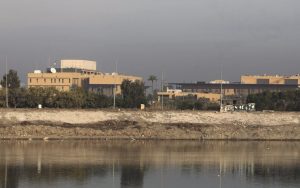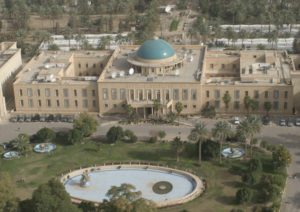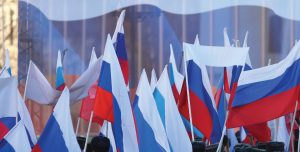West Point’s mantra to our class — “March to the sound of guns” – lingered in my subconscious and certainly propelled me throughout much of my career, military and civilian. I was an Army brat, watched “The West Point Story” and the Army-Navy football game on television, and like our fathers felt a duty to serve our country during war.
After graduating as an Armor lieutenant, Vietnam beckoned. I was first a platoon leader and XO in the 11th Armored Cavalry in III Corps and then a platoon leader in 2nd/17th Air Cavalry, 101stAirborne Division at Khe Sanh during the invasion of Laos, March 1971. That was like suddenly going from the minor to the major leagues. On the perimeter, we were shelled by artillery every day and then NVA sappers hit us hard one night. If I had turned right instead of left, I wouldn’t be here now. I did lose three fine soldiers, and there were many wounded, including myself. I always remember them and our classmates who were killed or wounded. Vietnam was a defining moment for us: it was long ago and faraway, but always remains very close to the heart.
The Army was good to me: Ft Hood for three years, grad school, and teaching at USMA in the Social Sciences Department. But I resigned in 1981 to join the private sector, first in telecommunications with MCI, then the entrepreneurial venture in Russia, followed by the electric power sector as general manager of an $600 million Enron joint venture to finance, build and operate a large power station in Turkey.
Then in January 2003 I received a call as the US Agency for International Development (USAID) was gearing up for the Iraq invasion. Long story short, I became the USAID Director of Iraq Infrastructure Reconstruction, and for over a year in Baghdad managed on behalf of USG over $3 billion of contracts with Bechtel and other contractors. Thus, I was pulled back into conflict settings and after Iraq spent the next 20 years as a senior executive for private sector firms winning and overseeing USAID and State Department-funded programs.
Reconstruction programs included rebuilding the coastal highway in Indonesia after the 2004 tsunami, and assisting recovery in Haiti after the 2010 earthquake. There were major civilian counterinsurgency, counter-violent extremism (CVE), and stabilization programs in Afghanistan (Taliban), Pakistan (Taliban), Colombia (FARC), Somalia (ISIS), Mali (ISIS), Yemen (Houthis), Cameroon (Boko Haram), and Nigeria (Boko Haram and ISIS-West Africa). My most-satisfying programs were in Syria against Assad’s regime. We supported the Free Syria Army and liberated municipalities in northwest Syria and more recently the Kurdish-controlled provinces in northeast Syria by supplying non-lethal military equipment and supplies; training police units in liberated areas; and building the capacity of local governments.
USMA inspired me by instilling a sense of public service, a keen interest to be on the cutting edge of historical events, and the satisfaction of accomplishing difficult tasks. It also gave me important skills in leadership, management, teamwork, and initiative to work under adverse conditions.
Now two years into retirement, I look back and reflect that we are so fortunate to be citizens of the United States and live in the greatest country in the world. Yes, our country has problems and severe divisions, but these problems pale in comparison to what I have seen throughout the rest of the world. Much of the world lives in poverty, represses women and minorities, is prone to horrific sectarian conflict, is governed by corrupt governments and institutions, and has little prospect for meaningful change. In short, the United States of America with its democratic institutions and strong economy is truly a beacon to the world.
And my other reflection is that throughout these international adventures, I’ve had strong support from my wonderful and beautiful wife, Victoria, who otherwise would have preferred that I focus on my duties as groom to her horse.
- Chapter 2 – Green Zone Developments – 2003
 The Uprising Begins – Life in the Green Zone was good into the Fall of 2003; we worked hard and played hard. But it was a false sense of security as Sunnis displaced in May from their former military and government livelihoods began to strike back in late summer by bombing… Read more: Chapter 2 – Green Zone Developments – 2003
The Uprising Begins – Life in the Green Zone was good into the Fall of 2003; we worked hard and played hard. But it was a false sense of security as Sunnis displaced in May from their former military and government livelihoods began to strike back in late summer by bombing… Read more: Chapter 2 – Green Zone Developments – 2003 - Iraq – Inside the Green Zone – 2003
 The terrorist attacks of September 11, 2001, ushered in a new phase of warfare for the United States that became known as the Global War on Terrorism (GWOT). It started with American paramilitary forces entering Afghanistan in late 2001 to eliminate al Qaeda leadership and then in March 2003 became an… Read more: Iraq – Inside the Green Zone – 2003
The terrorist attacks of September 11, 2001, ushered in a new phase of warfare for the United States that became known as the Global War on Terrorism (GWOT). It started with American paramilitary forces entering Afghanistan in late 2001 to eliminate al Qaeda leadership and then in March 2003 became an… Read more: Iraq – Inside the Green Zone – 2003 - Witness to the Fall of the Soviet Union, part 2: Capitalism – Russian-Style, 1992 – 1994
 We learned that doing business in Russia requires a kryusha – a roof for protection, of which there were two kinds: the unofficial Russian mafia one, or the official government one that usually included the KGB. Our Russian partners handled relations with the kryusha, in this case the municipal government of St.… Read more: Witness to the Fall of the Soviet Union, part 2: Capitalism – Russian-Style, 1992 – 1994
We learned that doing business in Russia requires a kryusha – a roof for protection, of which there were two kinds: the unofficial Russian mafia one, or the official government one that usually included the KGB. Our Russian partners handled relations with the kryusha, in this case the municipal government of St.… Read more: Witness to the Fall of the Soviet Union, part 2: Capitalism – Russian-Style, 1992 – 1994 - Witness to the Fall of the Soviet Union, part 1 – 1973-1990Wheelock – Witness to the Fall of the Soviet Union Part 1 1973 – 1990 One of the signature events of our time was the collapse of the Soviet Union in 1990, an event to which I contributed by awakening 180 million Russians to the prospects of freedoms and a better… Read more: Witness to the Fall of the Soviet Union, part 1 – 1973-1990
